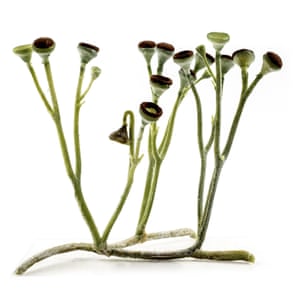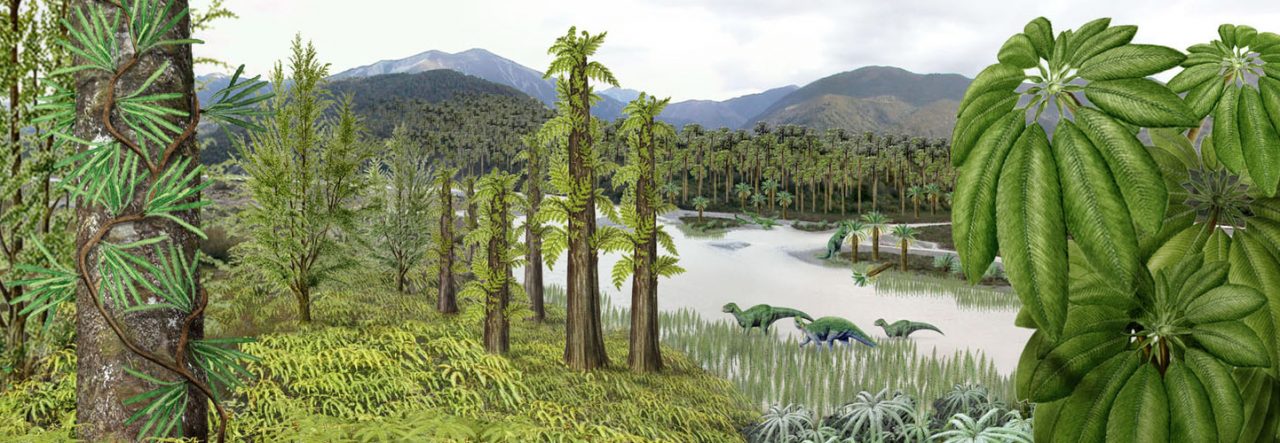Originally published at Lost Worlds Revisited for the Guardian Science Blog Network on 23 March 2018:
https://www.theguardian.com/science/2018/mar/23/how-the-earliest-plants-made-our-world-muddy
The first plants to make it on to land altered mud production and where it formed rocks, changing our planet forever
How and when the earliest plants made the first move on to land is always a hot topic for palaeobotanists. We know that early land plants likely evolved from freshwater algae, gaining a bunch of necessary adaptations in the process. Plants needed to support themselves, protect themselves from drying out and from the harmful effects of UV light, and gain water and nutrients from a finite supply on land. A study published last week by Mariusz Salamon and colleagues described fossils that push back the earliest evidence of land plants to around 445 million years ago.
The new fossils come from mudstones in central Poland, in beds that have been dated using other, much more common and cosmopolitan, fossils. The plant remains are tiny, branched fragments, up to about 3mm long. Some specimens appear to have spore-cases at the top of their branches, similar to those seen in younger, better-known early land plants such as Cooksonia. The preservation of the plants means details are hard to discern, but Salamon and colleagues present a single, tantalising stoma, or air pore, on one of the fragments as a key piece of evidence. If this plant had stomata for gas exchange, it was likely to have been living in land, a good 15 million years earlier than previously known plant fragments.
 A reconstruction of Cooksonia, one of the earliest known land plants. Photograph: Matteo De Stefano/MUSE via Wikimedia Commons
A reconstruction of Cooksonia, one of the earliest known land plants. Photograph: Matteo De Stefano/MUSE via Wikimedia CommonsOf course, you can come at the problem from the other direction. What global changes would you see in the rock record that could be explained by the activities of plants? This is the same kind of approach taken by geologists looking for evidence of life on other planets. What changes would you see preserved in rocks that cannot be explained away by inorganic processes, and by land plants in particular?
William McMahon and Neil Davies took this approach in a recent study, looking at the relationship between the buildup of muddy sediments on land and colonisation by the earliest plants. It has long been assumed that until plants colonised the land, most fine-grained sediments eroding from the continents were washed by river systems into the sea, where they formed marine mudrock. Once land plants became established, changes to both how rocks weathered and how fine, muddy particles were trapped by plants meant that muddy sediments could accumulate on land in much greater quantities. This long-held assumption was crying out for some testing with hard data.
McMahon and Davies assembled data from more than a thousand published reports and made more than a hundred field investigations, looking at rocks formed by flowing water on land, known as alluvial formations. Their database comprised all 704 known alluvial formations, ranging from the Archean eon 3.5 billion years ago to the Carboniferous period, a mere 300 million years ago.
Their analysis of the proportion of mudrock (made of grains 0.063mm or smaller) in alluvial deposits agreed with long-held geological hunches. For the first 3 billion years of the rock record, mudrocks form an average 1% of sedimentary deposits on land. By around 300 million years ago, mudrocks had risen to an average of 26% of alluvial formations. They pinpoint an upsurge between the Late Ordovician period (458 Ma) and the Devonian period (359 Ma) – which agrees remarkably well with the fossil record for earliest colonisation by land plants.
No tectonic or other purely geological events seem to explain the upsurge in alluvial mudstone, but three mechanisms associated with the appearance of early land plants would have boosted muddy deposits on land. First, plants would promote the weathering of rocks to fine clay minerals, and as rooting systems evolved, and symbiotic relationships with microbes increased, the depth of the uppermost layer of rocky soil in which chemical weathering took place would increase. In these ways, plants were adding to the production of fine-grained sediments. Second, roots would have had a binding effect, helping to retain fine-grained sediments and preventing erosion. The root systems of the earliest land plants were limited, though, so this explanation cannot be the whole story for the Late Ordovician to Devonian muddy upsurge. The final mechanism that may well have been pivotal in creating a muddy planet is the baffling effect that even tiny early land plants would have produced above ground, trapping fine sediments between their stems, leaves and other organs. This effect can be seen today: in environments where liverworts and mosses are the only plants that can make a living by forming a low ground cover, fine-grained mud and silt are incorporated in their clumps.
Once they were established more than 400 million years ago, rates of mud production and retention were permanently altered and mud became a permanent fixture of the rock record on land, thanks to the work of tiny plants over deep time.





